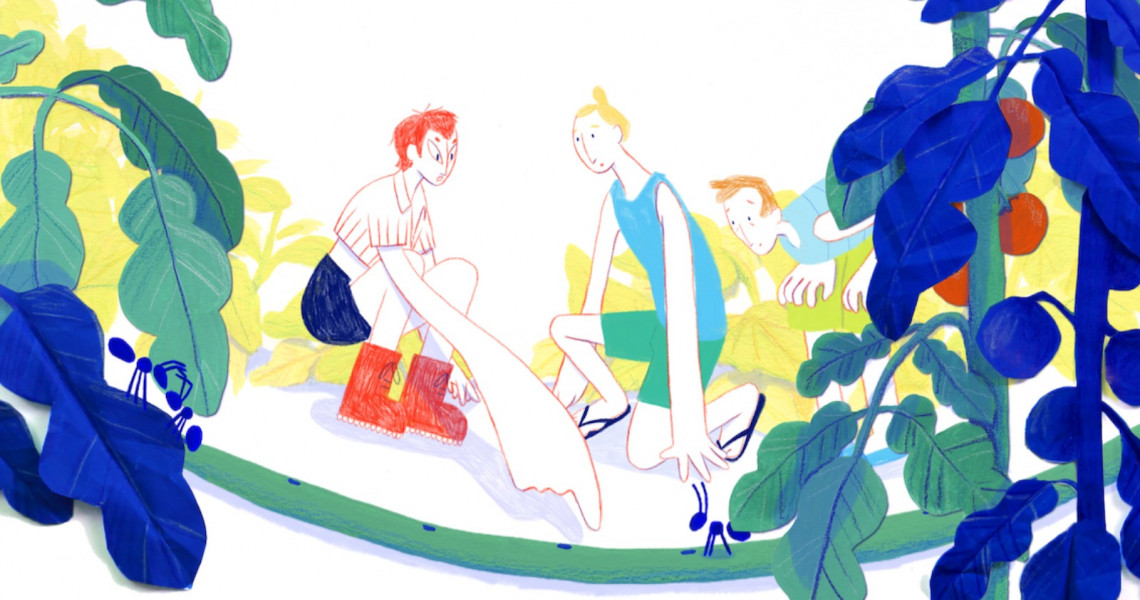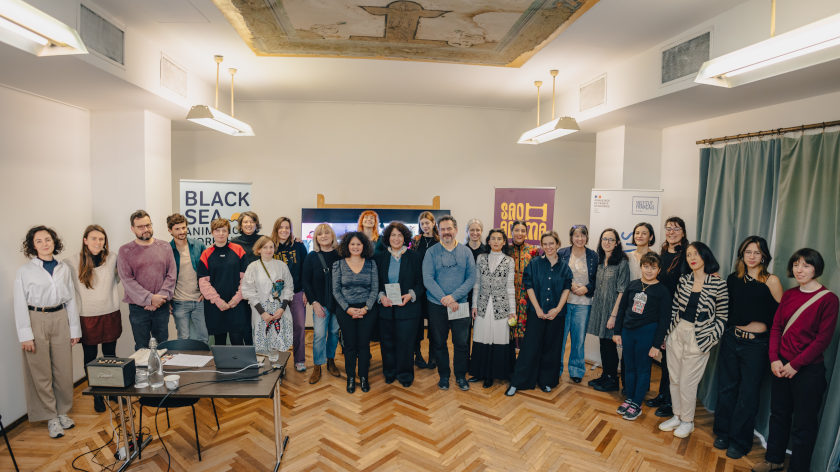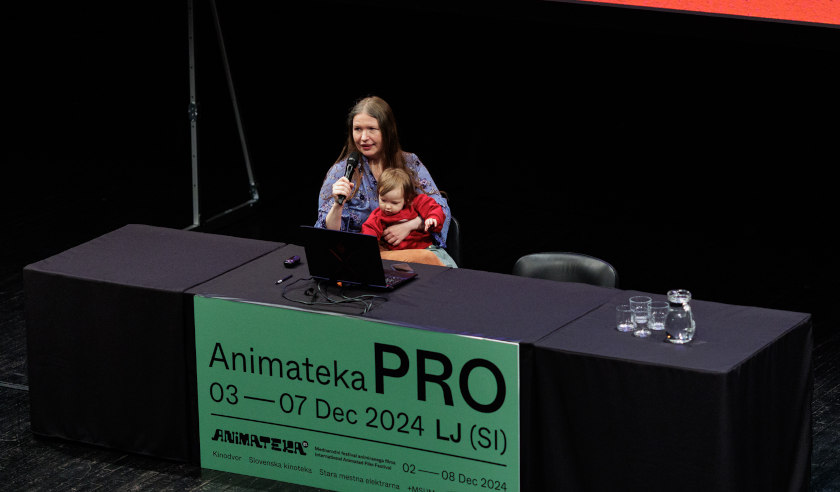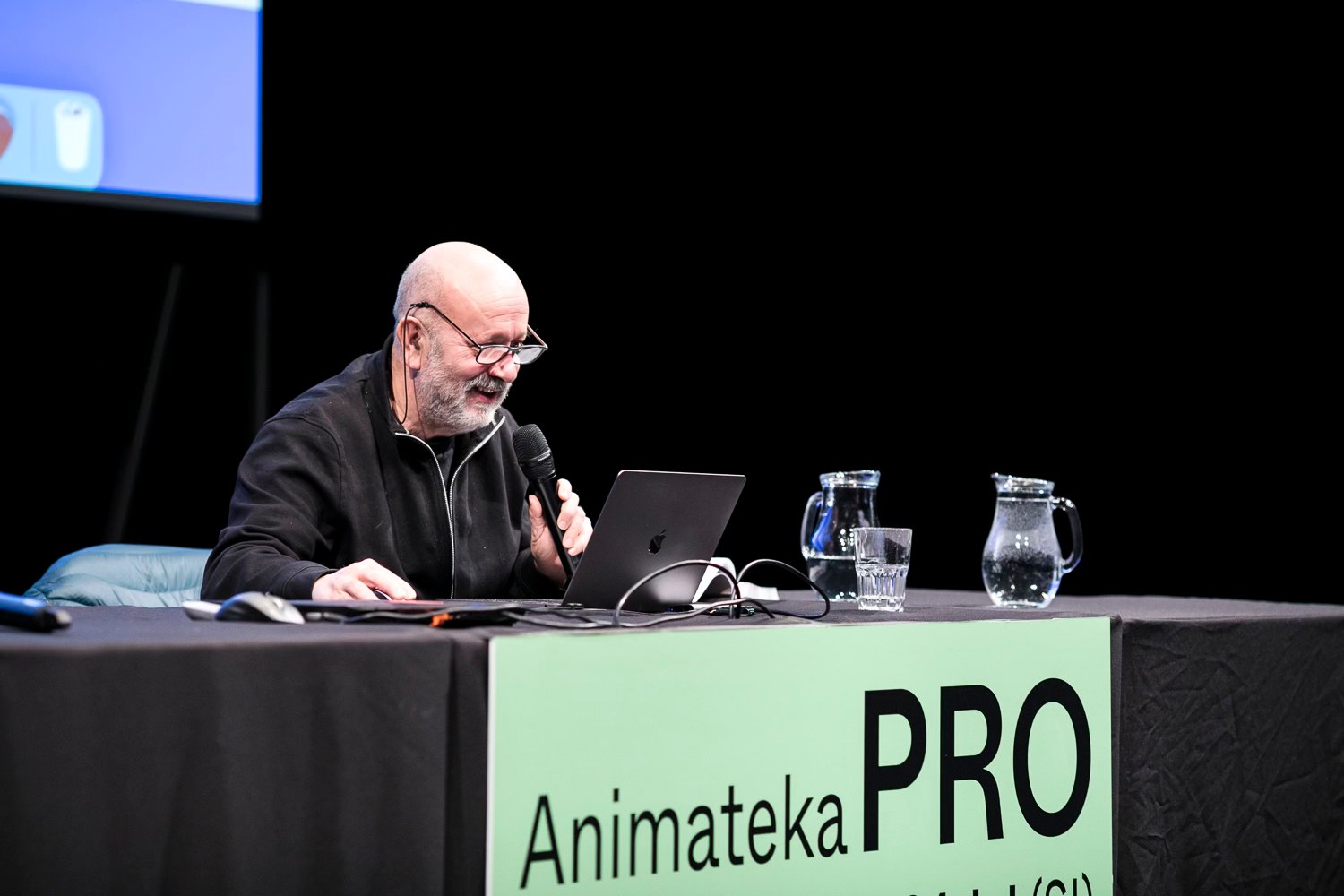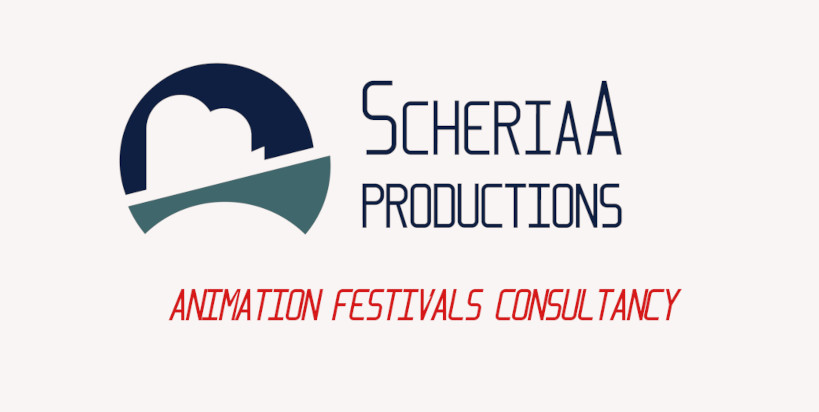On (The) Line: Notes on Ottawa International Animation Festival 2020
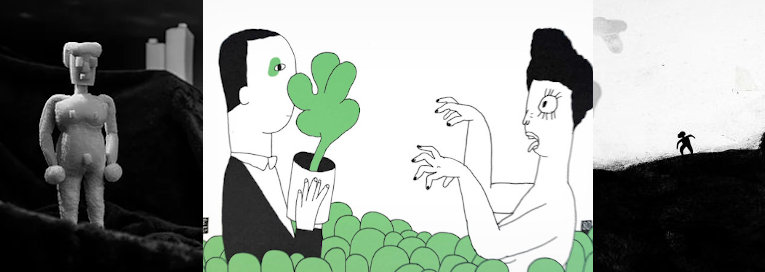
As with all the events of this sacramental year, the main point would be always: it did (unless it didn’t) happen, take place – in whatever space-time-circumstance continuum. OIAF went on as scheduled, unlike few others, shifting to virtual, like most, except for an evanescent set of efforts to the contrary, before, simultaneously and right after.
And with overall timeline of the festival circuit totally scrambled, its dramaturgy, so to speak, went to almost non-linear logic – with either Chekhovian or Pinterian pauses and undercurrent whispers, or even falling altogether into Brechtian alienation, which nowadays would seem frightenedly literal. Not so much competing for the hottest entries (though ‘first night right’, i.e. World Premiere status, wasn’t really enforced in peaceful/healthful times either), festivals-in-lockdown now are being distinguished by the platforms and format nuances, even if in technicalities, interface convivence, viewing/access/scheduling options/strategies – which is actually an intriguing topic in itself deserving a separate and special exploration. And still – in programming, of course, even if somewhat chancier this time; and the in ‘event style’ – even if yet more personalized in this peculiar zoomed-in perspective of the time.
OIAF for long was a brainchild of Chris Robinson; this time it looked-zoomed, perhaps inevitably, almost as his benefit gala (with great support of the faithful team, no doubt): from pre-recorded, and quite rich, talks with filmmakers to live post-screening Q&As, to virtual parties; all in all with footprints of his pimpy-witty-pensive touch. In between, he even managed to deliver, as recipient of annual scholarly award, a keynote speech at Zagreb Scanner conference (where this author happened to be also a participant and had a chance to discuss live-zoomed), happening oddly right in the middle of Ottawa ride (virtual, expectedly, albeit within the proudly-cautiously held off-line Animafest itself). This talk: Heavy Like the World – Did Animation Stop Being Funny, despite the polemic premise, sounded in fact as festival programmer/director’s confession of faith in disguise; and in effect, as shyly-resolute justification of sub-culture of ‘festival animation’, if there is one.
This spirit certainly could be felt in this edition OIAF line-up/selection – with that, quite diverse, not to say healthy eclectic. Must confess, having been caught, as many, with the constant flood of temptations-obligations, staying always in-on-line this strange season of ours, was not able to dive into the festival flow quite timely-systematically (and then to write promptly, by the same reasons, regrettably); but still tried in earnest to catch up. So, here are just cursive observations upon my personal picks among shorts, within or outside the awards list and through various departments, largely trying not to dwell much on already known and talked about titles.
KKUM (by Kang-min Kim, South Korea/USA) got both jury Grand Prize and Public award – reportedly, for the third time through the entire festival history – which is a bit of a mystery since it doesn’t seem exactly like a stuff of general entertainment-enjoyment. “My mother’s dreams have always been strong premonitions for important moments in my life. I rely on her dreams more than any religion” – as synopsis goes.
And here is a meditative piece on that, with touches of playfulness and even soft humor, but largely of semi-gloomy mood and style. For me, certain formal-instrumental moments are most enticing here: supposedly dealing with real materials and physical 3d objects/figures, or so it looks, the director chooses and manages to reach the impression of artificial, almost as if totally CGI space-environment; and uses seemingly the most sluggish-dull material you can imagine, Styrofoam, turning it into a rich and flexible artistic texture.
Pá kis panelom! (Bye Little Block!), by Éva Darabos, Hungary, was chosen for best design – I would’ve reformulated that rather as ‘design idea’ or visual concept. It is indeed quite strong and impressive in this overall gently nostalgic farewell glance at the apartment quarter, such a familiar type of soul-sapping slurb, yet dear to heart exactly as familiar, full with accumulated memories-experiences, and inhabited by not so obvious characters and things… Jury was taken by a vision of “Utopian place questioned by the central character in a film with just the right amount of surrealism…” – though I don’t see much of ‘utopian’ critique here, the very nature of vision, softly distorting the ‘familiar’ for the sake of recognizing it anew is freshly meaningful and promising, especially for a student or graduation film.
(Special awards, as we see, are considered here through all the categories. In the student department proper top prize went to Naked, by Kirill Khachaturov, Russia; it completed a spectacular hattrick – plus corresponding awards in Annecy and Zagreb – probably the first such case ever; my interview with the director and short review published at ZIppy Frames earlier).
La mer à boire (The Sea Is Too Much to Drink), by Charlotte Arene, France, was awarded in non-narrative category, for “using household objects, pixilation, and stop-animation technique to evoke a seascape”; and that presents an issue to me. Not regarding the merits of the film itself. I’d seen it before and honestly liked, how exquisitely-simply the bed sheets-covers would turn into moving waves, with protagonist, i.e. filmmaker herself, drowning and resurfacings in and out of sleep or dreams; a personal meditation through a truly complete ‘material metaphor’ of sorts; moreover that it became even more ‘grounded’ through the year past since actual filming – as we see the director at Zoom talks in the same room-setting, epitomized now as seclusion space not merely metaphorically. But rather –an issue in more general sense, with regard to the classification and subsuming under competitive classes.
Sure, I understand the programming considerations and practicality; and not really arguing against all that, just trying to contemplate the context or the mere word usage (in the spirit of that Robinson’s conference address, I’d hope). Back in (rather) old days, as I still can recall, or under different guidelines elsewhere then and now, that was a reserved-protected ground rather for abstract, in classic sense, exercises, or for really-really unconventionally structured utterances. Nowadays, isn’t it instead becoming a designated safe harbor for almost anything even slightly deviating from just easy-going storytelling… as if we’re not well accustomed, through pre- and post-modernism eras, to all the twisted varieties and types, and still don’t understand even the most straightforward narrative schemes as sheer conditionality of perception and culturally adopted habits. Besides, aren’t the artefacts of artistic animation to be compared, or judged for that matter, amongst all the rest, also by the choices made and results achieved precisely in narrative strategies per se?..
Some other competition entries of interest to me also seem to question this murky divide. In the case of Beyond Noh (Patrick Smith, USA, Japan) the classification might look more justified: after all, it’s a rather canonic ‘photo-montage’ variety, extra fast-paced to become quasi-animated, and presently there are around quite a few examples of the type, more or less successful. Here the incredible collection of 3,475 masks, in careful-sharp rhythmic and rhyming juxtapositions, is supposed to get turned indeed into “a cultural journey through ritual, utility, deviance, and politics” – would agree with the director’s statement. Then, isn’t it a clear, if not quite linear, ‘narrative’ in its own right? – moreover that it’s again being accentuated by today’s unforeseen connotations. The issue looks more complicated, and in a kind of reverse logic, with Anonymous (Steven Subotnick, USA), to my taste, one of Subotnick’s very best. He elaborated on the initial idea at the festival talk: a variation on the theme of specific American tall-tales, with ‘no-man’ instead, and in place of concrete names-characters in the center. And there is in fact a plot-line, a ‘story’, albeit somewhat sketchy told and not that easy to follow; so, technically this is certainly a ‘narrative’ piece. However, the visuals are so powerful (as a fellow programmer-filmmaker shared her impression with me at earlier encounter: It’s just monolithic, it’s like a mountain), the role of design so tangible, that it becomes overwhelming; and the whole piece appears more an exercise in graphic art per se than in storytelling, which doesn’t diminish a bit its value and effect in my eyes. After all, those facets are hardly separable in many other auteur universes as well, to state the obvious.
And about one more ‘non-narrative’ entry: Living in a Box, by none other than Theo Ushev – “an antiMATION planDEMIC planTOMIME film”, in self-definition. It plays out like an expanded pixilated selfie, head in the real cardboard box, no doubt, and hands jiggling around it. In that, surprisingly enough, Ushev reveals certain taste and drive towards puppeteering, on top of all the rest in his toolbox. But more interestingly, while his previous, seriously personal, bordering confessional, film The Physics of Sorrow is still on the festival run collecting awards (right during the OIAF receiving special jury mention in Zagreb) and still a subject of current critical acclaim and discussion, he comes up with yet another open utterance, not to say narrative, albeit of a drastically different nature – a sarcastic-painful-proud-hopeless-exciting meditation on human condition under the circumstances – but no less personal with that, not to say lyrical in a peculiar way.
Back to narratives – not to forget a humble one in competition that nevertheless catches your eye with both sharp-laconic style and weirdly touching storyline: Pracka (Washing Machine) by Alexandra Májová, Czech Republic – about a true romance, with its drama and comedy, between a man and… well, see the title.
And again, the weirdness of our common present adds an additional touch: in the Q&A, zoomed from her own kitchen, of course, the director confesses – yes, that’s for real, here it is, an old noisy beast, yet feels like a family member, and now it’s so sad to leave it behind as we’re about to move. In regard to inherent conditionality of the art of animation…
Similarly, couple of humbly original entries looked to me appealing in Canadian panorama. The Lonely Spruce by Dan Sokolowski (from Yukon, no less, which shows) – a ‘tree portrait’ against Arctic-like backdrop in a fixed -angle shot, rendered through wide variety of techniques – not exactly unknown type of exercise, but done here with enough inventive taste to hint to some new insight on transforming power of style. And Stache and the Inner Walk by Joanne Fisher, with Salvador Dali’s runaway moustache, of all things, as a central character – a whimsically serious homage to the master through attempt on playful deconstruction of his self-mythology. As it comes from a first-time independent filmmaker (benefited from the Quickdraw Animation Society’s Chris J. Melnychuk Memorial Scholarship and Residency), we better keep in mind the name.
As it comes apparently from a self-taught independent beginner, if I’m not mistaken, we better keep in mind the name.
Then, another sub-plot. I might be biased here, naturally, but couldn’t help noticing: Russians are coming! – in force and in surprising numbers. That could or should be reserved for a separate article on these pages – on the present Russian scene in general or current festival exposure, for instance – but just to indicate the field for now, including residents and expats. Besides the above-mentioned Kirill Khachaturov’s Naked, there also was already acclaimed The Nose or the Conspiracy of Mavericks by veteran Andrei Khrzhanovsky (special mention in feature competition). And quite a few more, a full five competitive shorts alone. 10 000 Ugly Inkblots, by Dmitry Geller, one of most interesting mid-generation directors – a continuation of his recent cycle of collaborations with Chinese film schools and students, an exquisitely stylish homage to a particular iconic artist and the culture in general. Schast’e (Happiness) by younger Andrey Zhidkov, an awkwardly introspective monologue of common man’s misery amidst bold use of imagery of Pavel Filonov, genius of early Soviet avant-garde art. Room with a Sea View by Leonid Shmelkov, who after completing several bright award-winning films at home and even teaching-supervising in Moscow film schools, went to study under Pärns in Tallinn, and now presents here a student-again work – a twisted love-obsession story where Russian sensibility tangibly mixes with Estonian estrangement, or vice versa.
And two children’s entries: Odeyalko (Blanket) by Marina Moshkova, a humbly simple piece, with some prior national recognition, on the friendship of bears, polar and the other; and even more impressive and already recognized Devochka-ptichka (The Girl-Bird) by Ekaterina Nevostrueva – a gentle phantasmagory on dreams and relations in elegantly brave drawing. Then, in World Panorama: Anna, Koshki-Myshki (Anna, Cat-and-Mouse) by Varya Yakovleva – an intriguing sample of feminism Russian (rather harsh) style, I’d dare say; and also there, under the auspices of German school, Black Snots and Golden Squares by Irina Rubina – an arty play midway between the abstract and the figurative. (Maybe it would be not that inappropriate to add, on the grounds of language and references used, yet another expat student, from Ukraine, and this time of Canadian school: Anna Rudichenko in Metamorphosis transports Kafka’s plot and characters into distinct Soviet post-war apartment-environment, of all places, and attempts to play it out in characteristic old-school drawing and psychology.)
Well, all in all, we have to congratulate OIAF and the others, and the community, and ourselves with staying in line even if on-line – and not being boxed-in completely. With that, now have to move on, in the immovable travels, down the line, if only on-line, to Chicago International and Chicago Children’s, and to Moscow Big Cartoon fests, and further onwards, and out of the box one day, let’s hope.
Contributed by: Mikhail Gurevich
About Mikhail Gurevich:
Independent scholar and critic, born in Moscow, Russia. Writes on literature, theater, film and culture at large, with concentration in animation, puppetry, and experimental theater and cinema. From late 1970s was actively contributing to major cultural publications in Russia; later edited independent periodicals. Worked as expert-consultant for professional associations and studios in theater and cinema. From 1992 lives in USA. Wrote on animation in particular for professional and academic publications; recently contributed extensively to the history of world animation by G. Bendazzi; to Global Animation Theory (Zagreb) and Propaganda, Ideology, Animation: Twisted Dreams of History (Krakow). Lectured in several universities and institutions internationally. Participated in a number of festivals as programmer, curator, juror and discussant; currently affiliated with Blow-up International Arthouse Film Festival (Chicago). Also involved in broader cultural journalism and documentary film-making; interpreter and translator.




